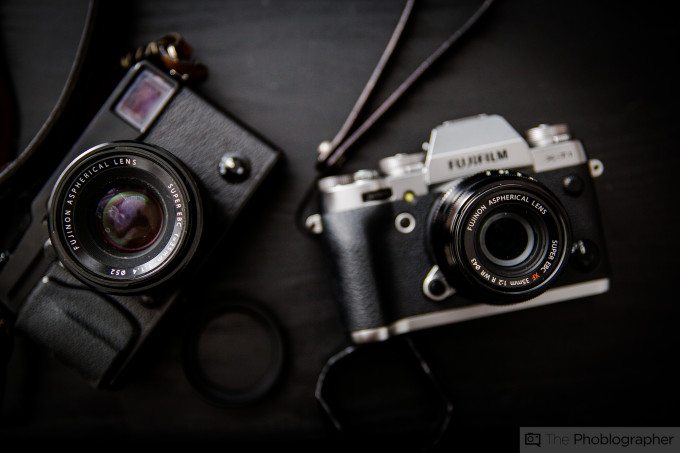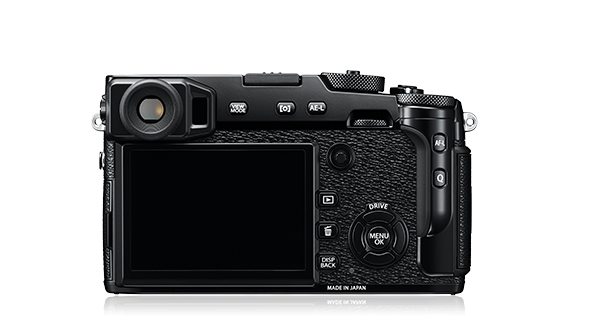Earlier on before last night’s announcement, I had a chance to play with the new Fujifilm X Pro 2. To me, this is something that I’ve been waiting for for a long time. This camera is Fujifilm’s flagship in terms of the rangefinder style camera body–but it will live alongside the XT-1 as a flagship body but just marketed to the rangefinder crowd.
This camera in many ways takes what Fujifilm wanted to improve on and what many of the users wanted improved. It isn’t a full frame camera–and that’s fine. A camera like this is about the experience on top of the image quality it can put forward.
In my meeting, I wasn’t allowed to take photographs of the camera; but I spent considerable time with it. Than I usually get. Here’s what I remember and why I feel that for street photographers, this may be one of the more important cameras released this year.
Before I go on, here are the specs:
- World’s first Advanced Hybrid Multi Viewfinder with 2.36 million dots and maximum speed of 85 frames per second
- Diopter correction mechanism with an eye point of 16mm and a telephoto bright frame with enlarged focal length of 140mm
- 24.3MP APS-C X-Trans CMOS III Sensor
- Fast AF of up to 0.08 seconds
- Phase detection AF and motion predictive AF for continuous shooting up to 8 frames per second
- Start-up time of 0.4 seconds
- Shutter time lag of 0.05 seconds
- Shooting interval of 0.25 seconds
- Focal plane shutter top speed of 1/8000 second
- Flash sync speed up to 1/250 second
- Dust and water-resistant body with more than 61 points of weather sealing and freeze resistance to 14°F
- High-precision 3” rear display with 1.62 million dots
- Dual memory card slots (Slot1 compatible with UHS-II standards)
- New monochrome ACROS film simulation for smooth tones, deep blacks and rich textures
- New Grain Effect mode for images reminiscent of old film photos, especially when printed
- Maximum ISO performance up to 12800 sensitivity; Extended ISO ISO100, 25600, 51200
- Improved electric charge transfer rate for ultra-fast readout speeds
- Interval timer for shooting time-lapse sequences of one second to 24 hours, up to 999 frames
- Free FUJIFILM Camera Remote application and Wireless Communication function allows users to remotely shoot images from smartphones and tablets via WiFi
- Photos can be sent to the INSTAX Share Printer using the free INSTAX Share App (iOS and Android) SHARE Smartphone Printer
- Full HD video 1080p at 60fps; bit rate of 36Mbps for clear capture of delicate movements; frame rates of 60 fps, 50fps, 30fps, 25fps and 24fps, supporting worldwide motion picture formats
- Advanced creative filters
- Optional accessories:
- Hand Grip MHG-Xpro2 – improves grip and retains access to battery and SD card, and compatible with an Arca Swiss plate
- Leather Case BLC-XPRO2 – genuine leather bottom case elegantly shows off the X-Pro2’s classic design while protecting the camera body with battery access
The FUJIFILM X-Pro2 (body only) will be available in February 2016 for USD $1,699.95 and CAD $1,899.99.

One of the biggest things for me about the Fujifilm X Pro 2 is that it does exactly what Canon and Nikon has been doing for a while now: a joystick. This stick lets you very quickly choose a focusing point. Before, what you needed to do was press the AF button or one of the directional buttons that was programmed (often the bottom one). This makes the focus selection process much more straight forward for street photography, documentary shooters, etc. In fact, they’re really pushing this camera to the Street Photography crowd.
Even more, the viewfinder has its own diopter now–so you don’t need to put a specific glass circlet on there to see perfectly through it. Of course, they also kept the optical viewfinder as well as the electronic viewfinder. Manually focusing with the optical viewfinder has been improved to in that the split prism focusing option is now in color vs black and white.
As many readers of this blog know, I’m visually impaired–I have a terrible astigmatism that really makes seeing through my left eye really tough. The new viewfinder is very high resolution and like the new Leica cameras, I can see through it fairly well without my glasses on. Through my right eye, it’s pretty much perfect. I didn’t see any sort of lag that most folks would notice; and overall it’s a very excellent experience.
This new design doesn’t accommodate for a new ergonomic kit very well though. The X Pro 1 had one that made it feel more like a rangefinder, but this one doesn’t have one. One of the reasons why I’d really be concerned about this is for a better thumb grip. That thumb grip area is there, but it could be more pronounced.
What Fujifilm isn’t really talking about though is that there is a new menu system. literally, everything is color coded this time around. With the X Pro 1, there were three sections in three different colors. But this time around, each section has a different color.
One of the big things that the X Pro 1 was lacking was WiFi transfer abilities. It didn’t even work well with an EyeFi card. But now, you can shoot and upload to your phone or tablet or even print with ease. It provides a much needed shareability feature that street photographers would love due to the more immediate nature of services like EyeEm or Instagram.
As far as focusing goes, the prototype that I saw focused very quick with the new 35mm f2, and quicker than anything else with the 35mm f1.4–one of the company’s slower lenses but heavily worked on via firmware updates.
Combine all this with the fact that it’s weather sealed, can offer more resolution due to being a higher res sensor, and you’ve got a camera that can do a heck of a lot. Though it doesn’t have a full frame sensor and therefore the marketing that Sony can do, Fujifilm arguably has the best APS-C sensors in the industry as well as a fantastic lineup of lenses.
And personally, I’m quite excited.




